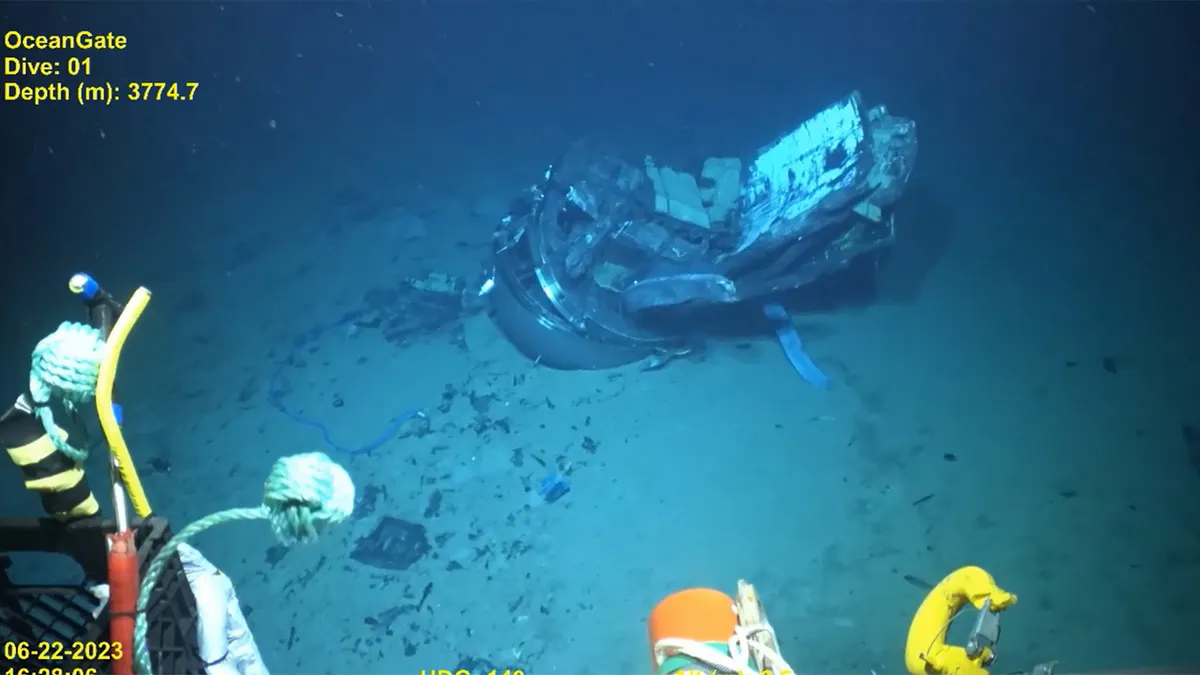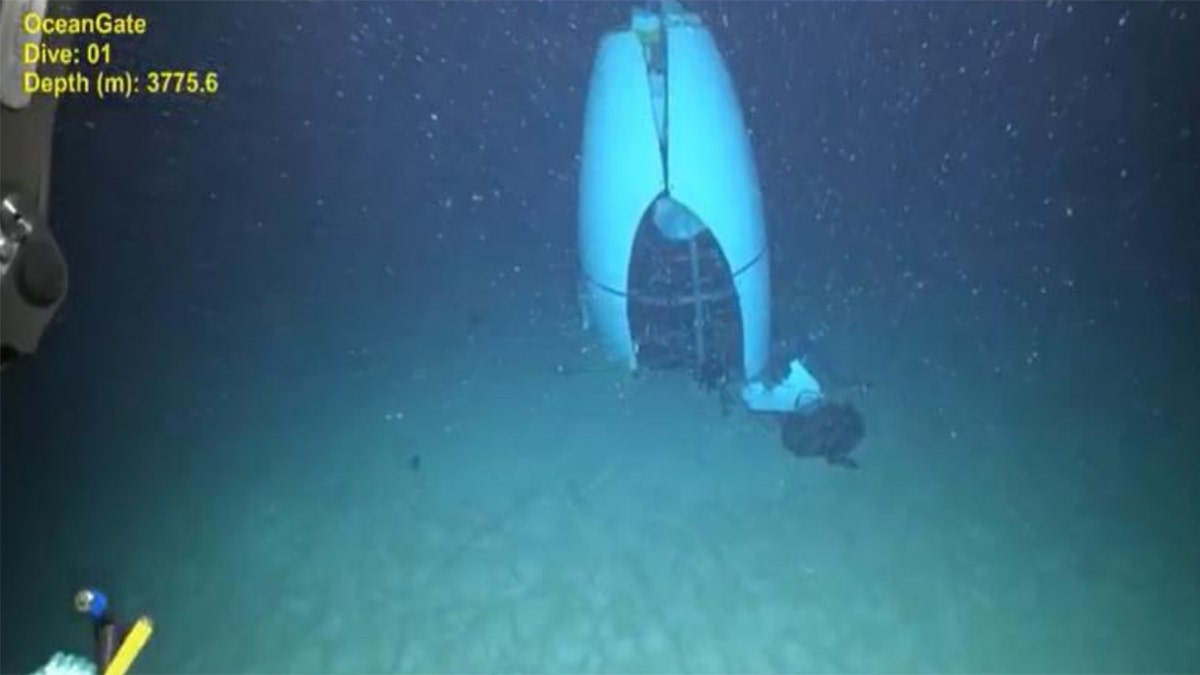US Coast Guard releases underwater video footage of Titan submersible wreckage
The U.S. Coast Guard released underwater video footage of the tail cone and hull remnants of the ill-fated Titan submersible that imploded on its way down to the Titanic in June 2023, killing all five people on board.
Stockton Rush, the OceanGate co-founder and CEO behind the ill-fated Titan submersible, claimed the carbon fiber hull of the deep-diving vessel was developed with the help of NASA and aerospace manufacturers.
But an official with NASA said it had little involvement in the process.
Also chiming in was a Boeing official, who said recommendations made by the aerospace manufacturer were ignored.
Justin Jackson, a materials engineer for NASA, said the agency intended to play a role in building and testing the carbon fiber hull, but the COVID-19 pandemic prevented it from fulfilling that role.
OCEANGATE CEO KNEW TITAN SUBMERSIBLE VENTURE WOULD END IN DISASTER, FRIEND TESTIFIES

The Coast Guard Marine Board of Investigation released remotely operated vehicle footage of the Titan submersible’s aft dome, aft ring, hull remnants and carbon fiber debris on the seafloor before upcoming technical testimony for the Titan MBI hearing in North Charleston, S.C. (U.S. Coast Guard video courtesy of Pelagic Research Services)
Instead, NASA consulted with OceanGate on a one-third scale mock-up of Titan, not the actual submersible that imploded with five people, including Rush, on board while descending to the Titanic wreckage June 18, 2023.
Jackson spoke to the Coast Guard Marine Board of Investigation (MBI) in a hearing Thursday about the relationship between NASA and OceanGate, saying NASA balked at allowing its name being used by Rush’s company.
EERIE VIDEO SHOWS TITAN SUBMERSIBLE TAIL CONE ON OCEAN FLOOR
"The language they were using was getting too close to us endorsing, so our folks had some heartburn," Jackson told the MBI during a hearing. The hearing was part of an investigation into what caused the Titan to implode under the surface off the coast of Newfoundland, Canada.
Boeing was also reportedly involved in a feasibility study early in the process, which looked into the use of carbon fiber for Titan’s hull and in OceanGate’s acoustic sensors on the vessel.

The Titan submersible in the Bahamas in May 2018. (Becky Kagan Schott)
Mark Negley, a material and process engineer at Boeing, said OceanGate walked away from recommendations from Boeing on hull thickness and orientation of carbon fiber layers that would provide the greatest strength.
Officials from the Coast Guard said at the beginning of the MBI hearing earlier this month that the vessel was not independently reviewed before its journey to the bottom of the sea according to standard practice.
The design of the vessel was also subjected to scrutiny by members of the undersea exploration community.
OHIO BILLIONAIRE PLANNING ‘RETURN TO THE TITANIC’ DESPITE DOOMED TITAN SUBMERSIBLE VOYAGE

An image of the Titan tail cone sitting at the bottom of the ocean in June 2023. (US Coast Guard/Pelagic Research Services)
Coast Guard Marine Inspector John Winters testified Thursday that Rush opposed regulations he claimed stifled innovation, though he never tried to circumvent any of the regulations set by the Coast Guard.
Winters told the panel he knew of two other submersibles used by OceanGate before learning it had created a new vessel that could go deeper to reach the Titanic.
He said he was not aware if the company notified the Coast Guard about Titan’s construction or if it reached out to the Coast Guard for guidance.
OCEANGATE CEO CRASHED SUBMERSIBLE INTO SHIPWRECK IN 2016, THREW CONTROLLER AT CREW: EX-EMPLOYEE

Stockton Rush, CEO of OceanGate exhibitions, at Times Square in New York City April 12, 2017. (Reuters/Shannon Stapleton)
"We didn’t get into about what standards it was built to, who built it. None of that was discussed," Winters said. "It was just, ‘Hey, we have a submarine. It’s good for 4,000 meters. We have a submarine to do that now.’"
More witnesses are expected to testify during the hearing, which continues through Friday.
CLICK HERE TO GET THE FOX NEWS APP
The ongoing MBI probe is the highest level of marine casualty investigation conducted by the Coast Guard.
After its conclusion, recommendations will be submitted to the Coast Guard’s commandant.
The National Transportation Safety Board is also investigating.
Fox News Digital’s Louis Casiano and The Associated Press contributed to this report.



